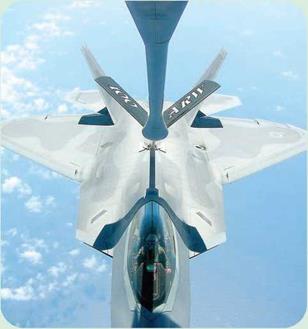Shortcomings of Stealth
Stealth airplanes rely almost entirely on being nearly invisible to radar. This fact brings with it certain limitations that can put stealth aircraft at a disadvantage. First, neither the F-117 nor the B-2 carries defensive armament, so they cannot defend themselves. Second, most high-performance jet airplanes rely on engine afterburners to boost their speed in combat. Afterburning produces highly visible emissions of exhaust gases, however, which make the airplane more detectable. Stealth aircraft, therefore, lack afterburners and so do not have supersonic performance. This makes them vulnerable to faster fighters once they are detected. Third, the design of stealth aircraft may protect them from enemy missiles that use radar, but it offers no protection from other weapons. Fourth, the unorthodox shape and slow speed of stealth planes make them inferior to conventional fighters when engaged in aerial dogfights.
The stealth aircraft’s sophistication also can be a disadvantage. The electronic fly-by-wire system required to keep a stealth plane like the F-117 flying adds to both the cost and weight of the aircraft. Advanced computers on the airplane are also a potential risk since electromagnetic equipment gives off radiation that can be detected by sensors on the ground, revealing the presence of the plane. All stealth airplanes need meticulous maintenance, since the aircraft skin must be kept flawless to preserve its radar anonymity. Even a scratch from a pebble thrown up during a landing, or weather damage to the paint, may increase the radar signature.
|
О An F-22A Raptor is refueled in midair. In service since 2005, the Raptor is both stealthy and supersonic. |
——————————————— N
SEE ALSO:
• Aerodynamics • Aircraft, Experimental • Aircraft Design
• Control System • Radar
_____________________________________________ /











